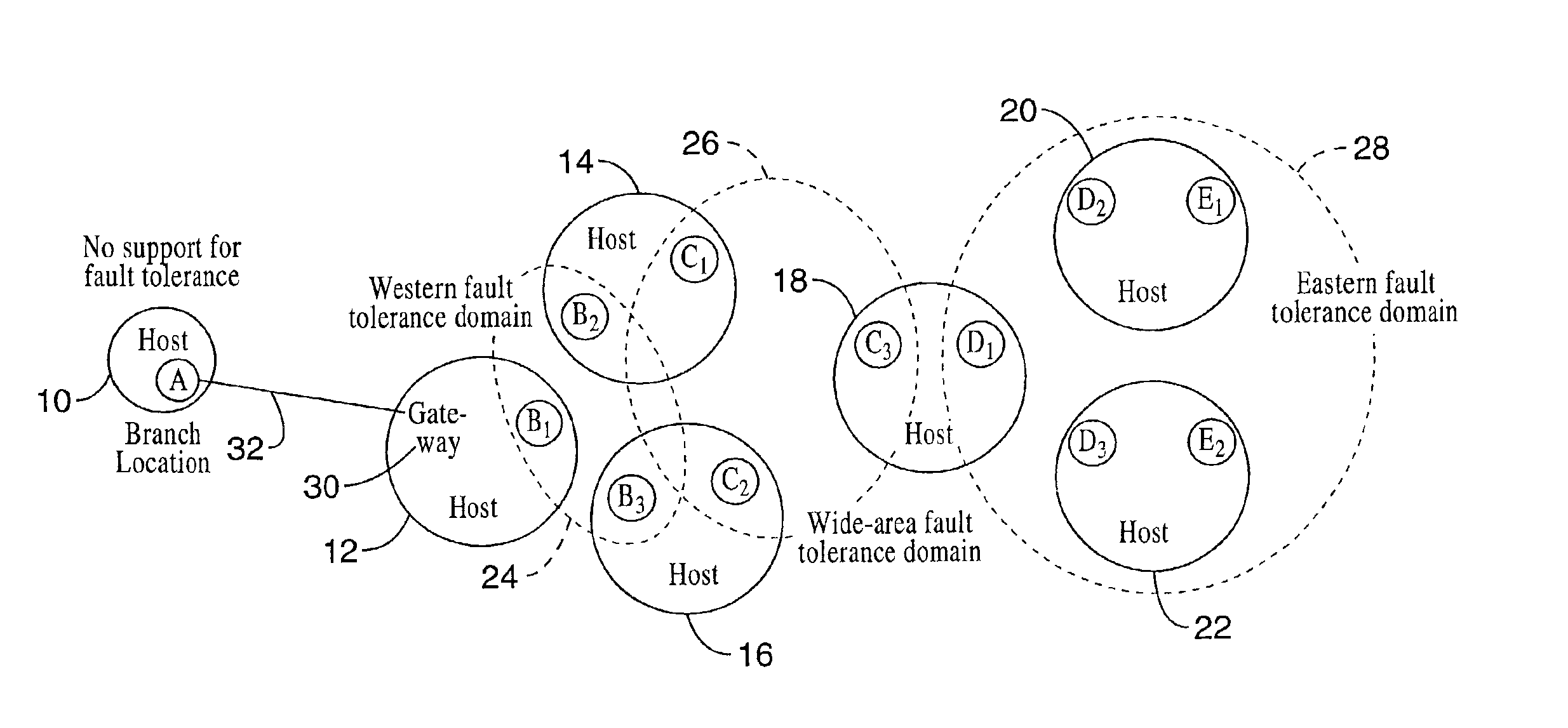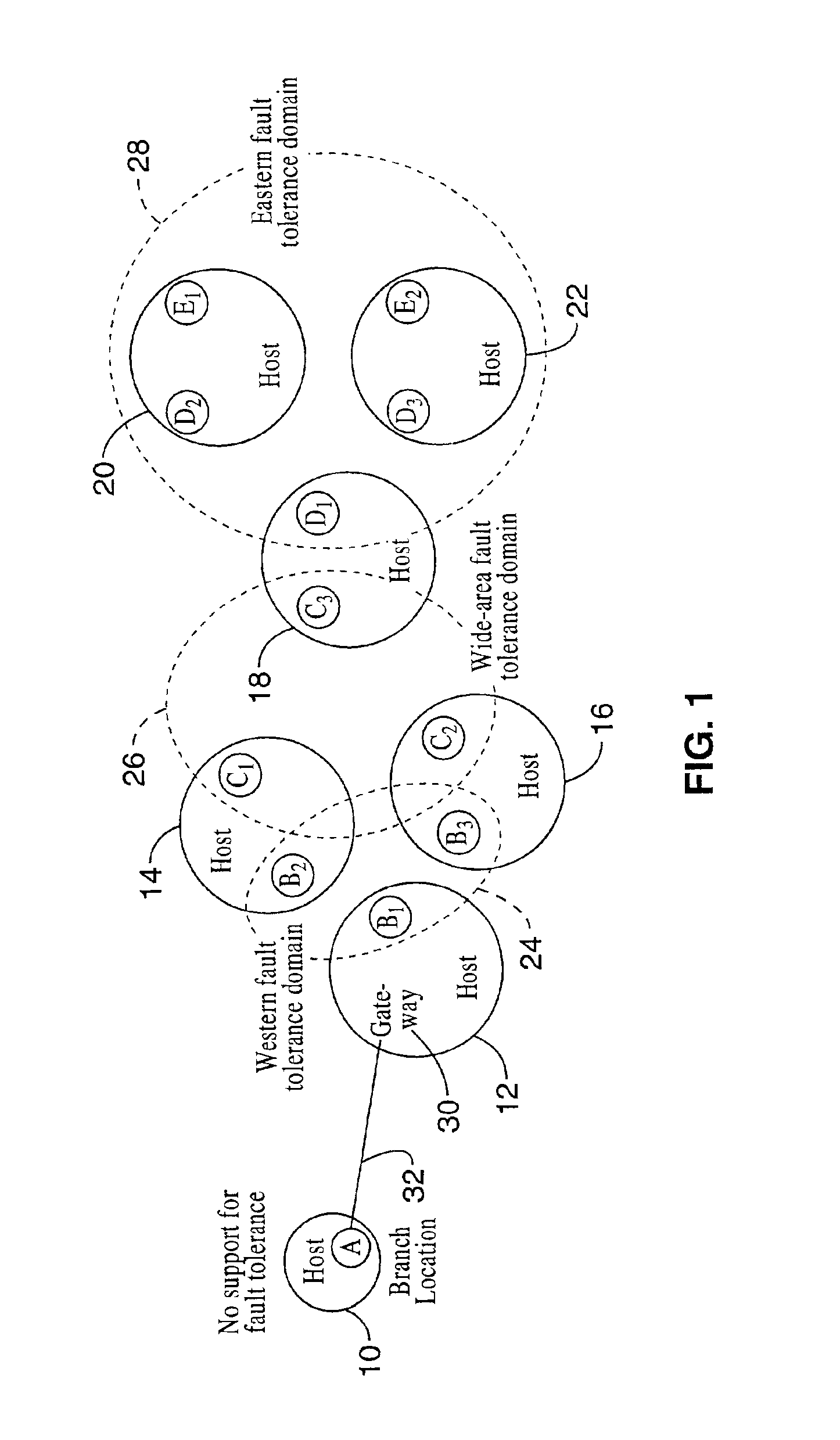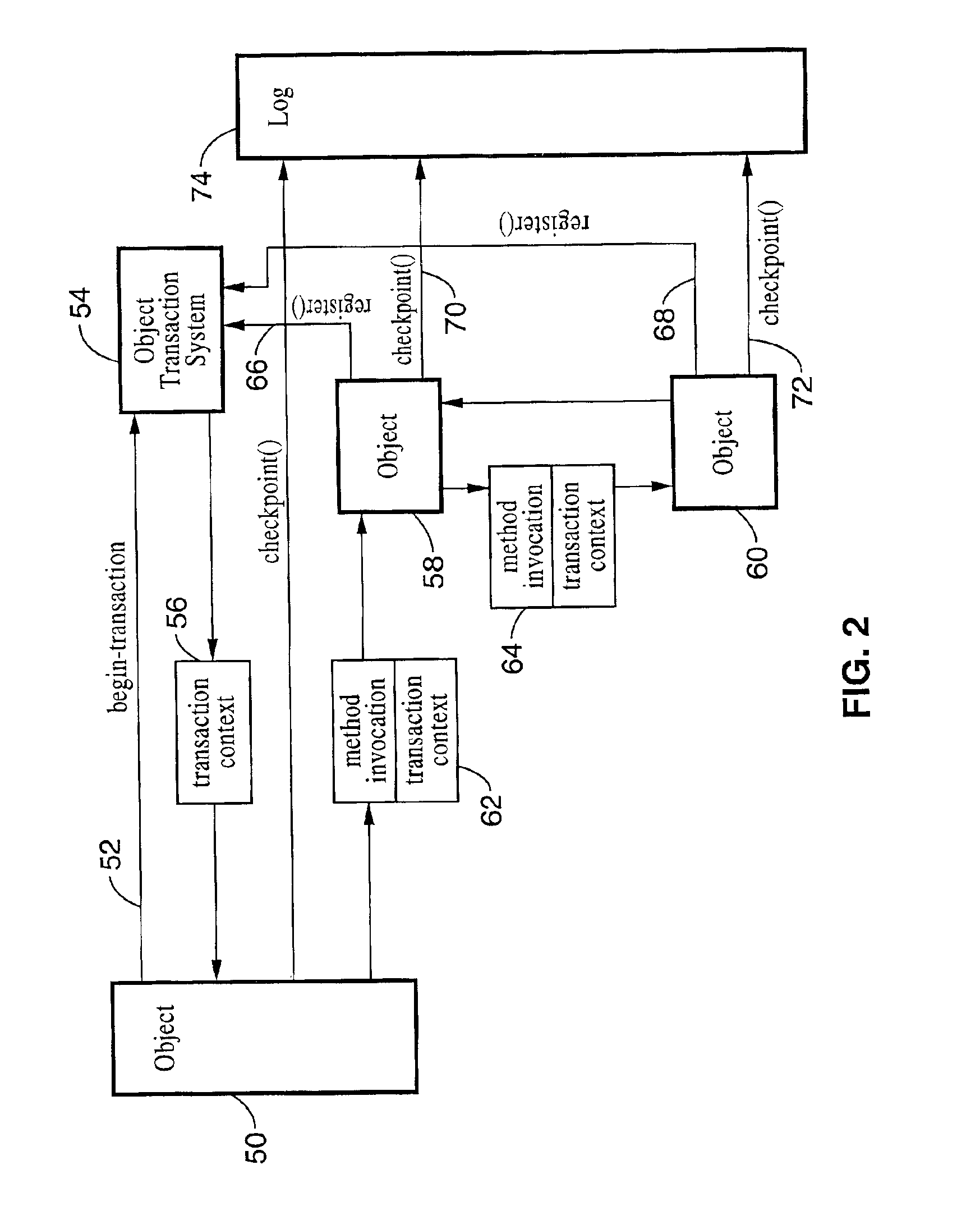Fault tolerance for computer programs that operate over a communication network
- Summary
- Abstract
- Description
- Claims
- Application Information
AI Technical Summary
Benefits of technology
Problems solved by technology
Method used
Image
Examples
case 1
[0072]An object enters Networked mode when it starts initially 290 and also when it is invoked by a remote object 292. An object enters Transactional mode either by explicitly initiating a transaction 320, 322, or by being invoked by an object that is already part of a transaction. FIG. 8 enumerates the conditions under which a server object S can enter a transaction. The table makes reference to the server object S and also to a client object C that invokes a method of S and thus initiates an activity in S. An object leaves Transactional mode and returns to Networked mode when its transaction commits or aborts.[0073] Here neither the client object C nor the server object S is a part of any transaction. The mechanisms of the Networked Enterprise Server pass C's request to S for processing in the normal manner 400.[0074]Case 2. The server object S is a part of transaction Ts but the client object C is not a part of any transaction. The mechanisms of the Networked Enterprise Server qu...
case 4
[0076] The client object C is in transaction Tc and the server object S is a part of transaction Ts. If Tc and Ts are the same transaction, the mechanisms of the Networked Enterprise Server pass C's request to S, which processes C's request in the normal manner 408. If Tc and Ts are different transactions, but C and S are within the same fault tolerance domain, the mechanisms of the Networked Enterprise Server queue C's request until transaction Ts commits and terminates 410 and then pass C's request to S for processing as in Case 3. If C and S are not within the same fault tolerance domain, the mechanisms of the Networked Enterprise Server reject C's request 412.
case 5
[0077] This case does not involve a client object C. The server object S initiates a new transaction 414.
[0078]The fault tolerance domain of an object is included as a part of the object reference of the object (Object Management Group, Fault Tolerant CORBA Final Adopted Specification, OMG Platform Technical Committee Document ptc / 2000-04-04, April 2000, incorporated herein by reference). Thus, when a method is invoked, both the client object and the server object know the fault tolerance domain. When a client object that is in a transaction invokes a method of a server object, the request message that contains the method invocation also contains a transaction context field that carries the identifier of the client's transaction (Object Management Group, Transaction Service Specification v1.2 (Final Draft), OMG Platform Technical Committee Document ptc / 2000-11-07, January 2000, incorporated herein by reference). These mechanisms, well known in the art, allow a client object and a se...
PUM
 Login to View More
Login to View More Abstract
Description
Claims
Application Information
 Login to View More
Login to View More - R&D
- Intellectual Property
- Life Sciences
- Materials
- Tech Scout
- Unparalleled Data Quality
- Higher Quality Content
- 60% Fewer Hallucinations
Browse by: Latest US Patents, China's latest patents, Technical Efficacy Thesaurus, Application Domain, Technology Topic, Popular Technical Reports.
© 2025 PatSnap. All rights reserved.Legal|Privacy policy|Modern Slavery Act Transparency Statement|Sitemap|About US| Contact US: help@patsnap.com



